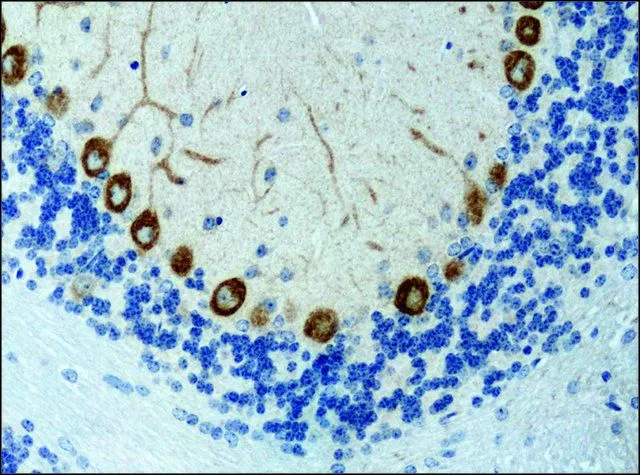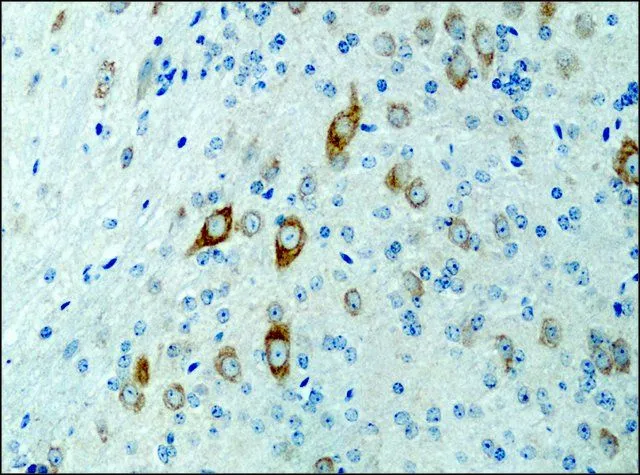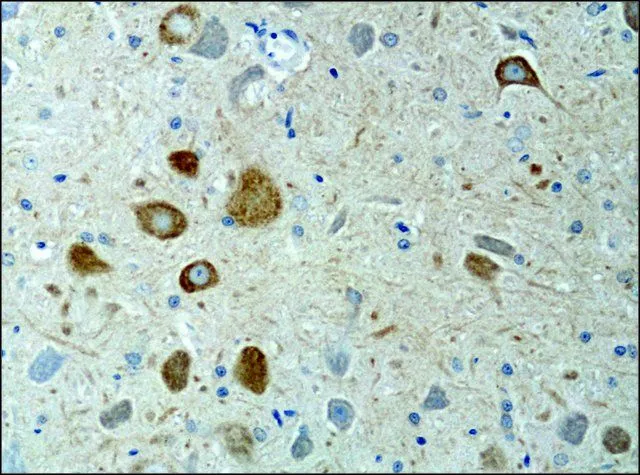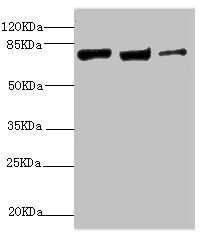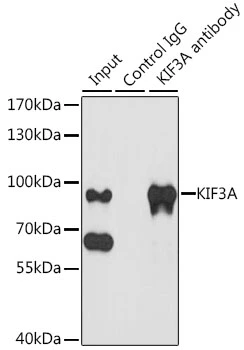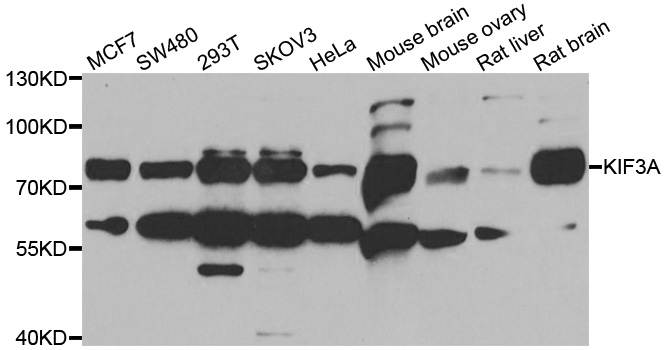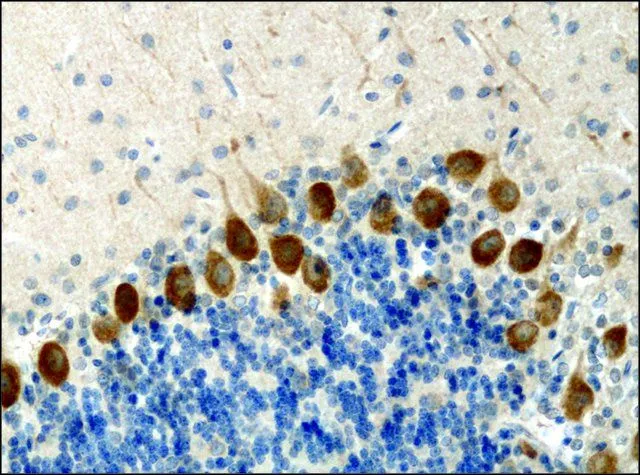
IHC-P analysis of rat brain tissue using GTX11259 KIF3A antibody at 0.1 microg/mL.
KIF3A antibody
GTX11259
ApplicationsWestern Blot, ImmunoHistoChemistry, ImmunoHistoChemistry Paraffin
Product group Antibodies
TargetKIF3A
Overview
- SupplierGeneTex
- Product NameKIF3A antibody
- Delivery Days Customer9
- Application Supplier NoteWB: 1:2,000. IHC-P: 1:100. *Optimal dilutions/concentrations should be determined by the researcher.Not tested in other applications.
- ApplicationsWestern Blot, ImmunoHistoChemistry, ImmunoHistoChemistry Paraffin
- CertificationResearch Use Only
- ClonalityPolyclonal
- ConjugateUnconjugated
- Gene ID11127
- Target nameKIF3A
- Target descriptionkinesin family member 3A
- Target synonymsFLA10, KLP-20, kinesin-like protein KIF3A, kinesin family protein 3A, microtubule plus end-directed kinesin motor 3A
- HostRabbit
- IsotypeIgG
- Protein IDQ9Y496
- Protein NameKinesin-like protein KIF3A
- Scientific DescriptionThe kinesin superfamily (KIFs) of proteins consists of a class of microtubule-dependent motors that plays a major role in many cellular and developmental functions, including organelle transport, mitosis, meiosis, and possibly long-range signaling in neurons. The KIF proteins are primarily associated with anterograde transport of vesicles and organelles in neurons, epithelial cells, and melanosomes with bidirectional transport of mitochondria and mediating transport between the endoplasmic reticulum (ER) and the Golgi complex. KIF3 motor complex is composed of the KIF3A, KIF3B, and KIF3C motor subunits, that associate as heterodimers, in which KIF3B and KIF3C are alternative partners of KIF3A. KIF3A/B has been shown to function in vivo as a motor for the anterograde fast axonal transport of membranebound organelles in neurons. KIF3 plays a crucial role during development. KIF3A-/- and KIF3B-/- mice do not survive beyond midgestation.
- Storage Instruction-20°C or -80°C,2°C to 8°C
- UNSPSC12352203

